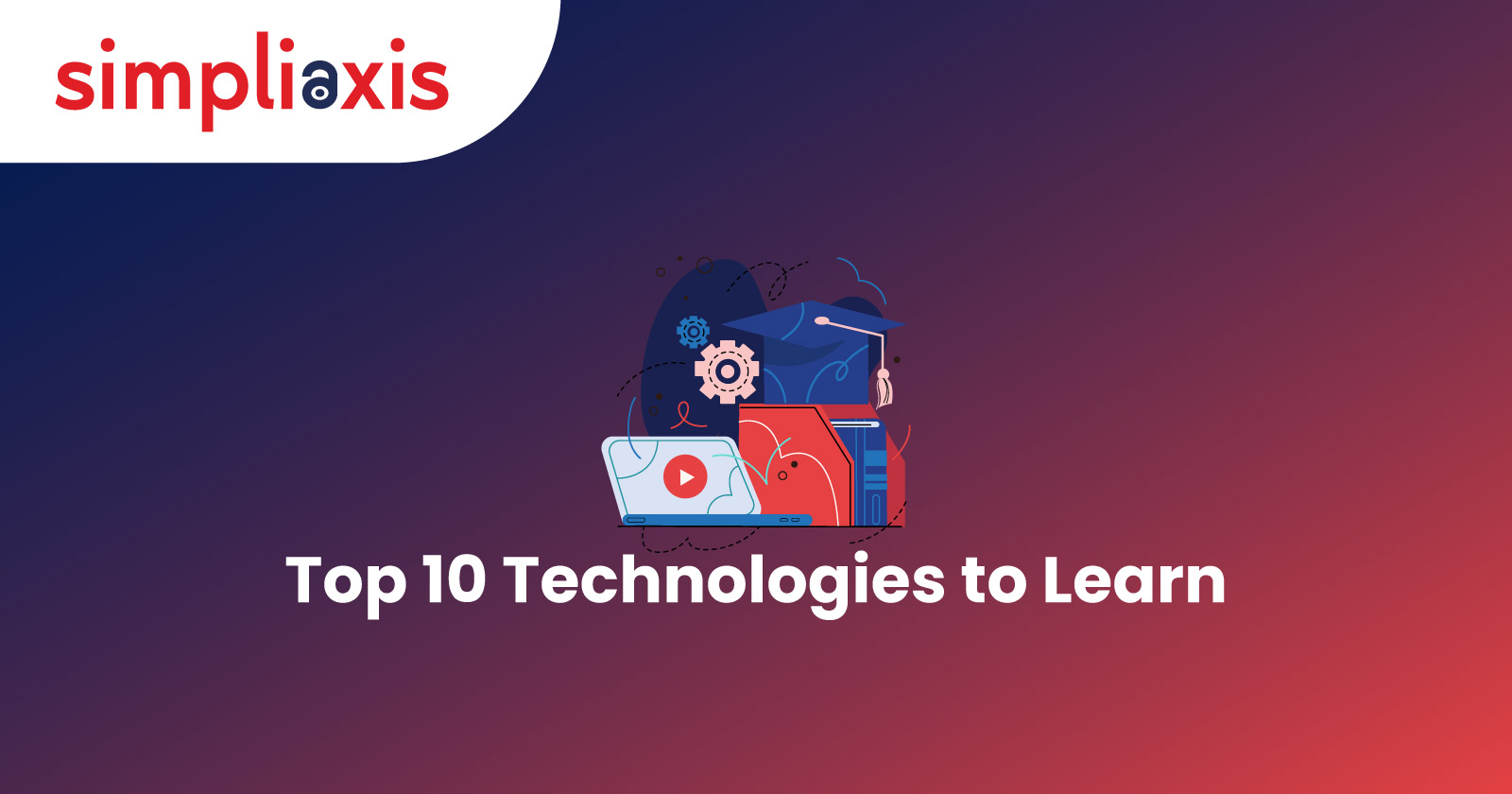Emerging Technologies, something to keep an eye on
Some of the technologies that are starting to come up nowadays will shape our future, but what exactly are they? Although the question may be simple, to give an answer, it is necessary to analyze a lot of data to try to understand which technological innovations will have a radical impact on the world economy, the environment, or the social order. Once these top technologies to learn for the future are known, they will work great in our favor.
In this article, we will reveal the top 10 emerging technologies that will probably change the current game completely. These are also incredibly interesting offers for developers, researchers, and people that can give capital for these technologies. Ultimately, this is what will make them develop in the next years to come so they become as big as they are predicted to be. Keep reading to find out more about them, and why you should keep an eye on them for the time to come!
Top 10 Trending Technologies
Keep reading to find out the top technologies to learn for the future. Note that the list provides based the information on top emerging technologies but not in order based.
Artificial Intelligence
One of the top 10 technologies is Artificial Intelligence. This technology can be defined as algorithms that imitate the cognitive functions of humans, allow the software to learn from experience, and in this way, perfect its operation cumulatively.
Artificial Intelligence is beginning to focus on complex and repetitive tasks that until recently seemed only humans could perform. Some of the many possibilities that are beginning to develop are a generation of textual, oral language and translations, automated user service systems based on voice recognition, which allows the creation of interactive response systems, economic, business, and other predictions to help make the best decisions, analysis of human behavior using facial recognition and other parameters and automation of marketing and advertising actions.
Enterprises are rapidly adopting cloud-based technologies. It is predicted, and if things keep going at the speed they are right now, that by 2025, the ubiquitous data and the intelligence algorithms are what will make lines of production to be as optimal as possible getting better by the day. This will reduce total manufacturing waste by up to 50%. What will we get out of this? Products with better quality, but with lower time and cost of production, both for us and the environment.
The professional profile with more weight within the field of Artificial Intelligence is that of an AI engineer. They are in charge of designing and deploying Artificial Intelligence systems as well as supporting them, creating and operating the data acquisition systems, executing analytical algorithms, and integrating analytical systems into business processes, in addition to adjusting and re-training them.
5G
5G technology is a new generation of the mobile network. It brings different capabilities to the other generations, higher bandwidths to download and upload content, lower latency, that is response time, and other improvements such as greater network security and lower energy consumption.5G internet has many implications in our daily lives. We are talking about the technological innovation of the Internet of Things (IoT) capable of interconnecting devices and people in a matter of seconds. In the near future, for example, it will not be strange to see tele-assisted surgical interventions drive new fleets of autonomous vehicles and coordinate agricultural work through sensors.
The confinement has also caused a very important growth in the use of videoconferencing by companies and educational centers, especially through low-quality networks. Low-latency 5G networks would solve this lack of network reliability and even enable more high-capacity services, such as telehealth, telesurgery, or emergency services.
Internet of Things (IoT)
One of the top 10 future technologies is the so-called Internet of Things. It is a concept that refers to an emerging technology based on the interconnection of everyday elements of daily use in the home, work, and public spaces. Although at first the Internet of Things was associated with wearables (virtual glasses, fitness bands or sportswear fabrics with possibilities of measuring kms, cardiovascular efforts or temperature) the truth is that the applications of the Internet of Things do not stop here. Today, we can find this technology in many sectors such as medicine as well as in public spaces in order to intelligently control traffic, water and other supply management, lighting of buildings and cities, alarms and other security devices, etc.
A professional in this category can lead projects as stimulating and with great growth potential as the development of business models based on these systems design, construction, and deployment of the different devices, design, manufacture and implementation of operations related to the systems of collection and processing of all this information and development of the logical sequences of action.
Augmented and Virtual Reality (AR and VR)
It has long been said that Virtual Reality (VR) and Augmented Reality (AR) completely revolutionize our lives. The ability of these technologies to transport us to a different world and maximize what we have insight has a giant potential to change the way we relate, consume content, and even live new experiences in the future. Recently, this technology has spread to many areas, such as retail, health, or the business world, among others.
In the retail sector, Augmented Reality is especially useful, as it offers a better customer experience. Thanks to this technology, a physical environment can be combined with virtual elements; in this way, for example, the consumer can get an idea of what a piece of furniture would look like in his living room or a piece of clothing on his body.
Virtual reality (VR), on the other hand, consists of "introducing" ourselves to imaginary environments and that we can interact with them. This type of technology is being used by athletes such as cyclists, who replace real roads with virtual ones when weather conditions do not allow them to go out to train outdoors. Similarly, AR/VR is proving to be very useful in the healthcare sector for the rehabilitation of patients with physical and neurological problems.
New uses of AR/VR are driving the business and according to the forecasts in the IDC report, the compound annual growth rate (CAGR) which measures the return on an investment over a given period of time is expected to be 68% over the next five years.
For British market analysts Technavio, according to data from a study published in August, the AR/VR market will grow by more than $162 billion between 2021 and 2025. The value of this market is expected to approach $525 billion by 2025.
Biometrics
The biometric industry is facing very relevant growth around the world in recent years, in parallel to the need to achieve greater protection and security in any sensitive process. Biometrics is a science that deals with identifying people based on the recognition of some physical (or behavior) and non-transferable characteristics that they possess such as for example, the face, the fingerprint, or the venous pattern of the finger. Unlike other more conventional protection systems, biometrics are effective, secure, reliable, and, above all, very comfortable for the user. In addition, it is impossible for anyone to lose their biometric key, as with a password or a key, because this password always goes with the person being inseparable and uncopyable.
The business opportunities for this industry are also increasing. In the financial segment, for example, the application of the Digital Payments Directive (better known as PSD2) requires the use of two authentication factors for the successful completion of banking transactions. Meanwhile, from a formal point of view, the European Union already uses the system called Electronic Identification and Signature (EIDAS) that standardizes and legislates in relation to electronic signatures, which has been a boost to all those digitization technologies for the signature of documents, in which biometrics plays a fundamental role, that will serve, according to the Community estimates themselves, to promote an annual growth of this industry of 25% per year until 2030 in the Old Continent. According to data from Statista, in 2027 the global biometrics market will move more than 55,000 million dollars worldwide, its growth being consubstantial to that of online payments.
Blockchain
The origin of the Blockchain is closely linked to the phenomenon of cryptocurrencies and bitcoin, due to the need to have a system that ensures the authenticity of this type of security, which could lead to manipulations and fraud. Blockchain, a computer system based on blocks or smart contracts, has emerged as a reliable method to create integrations with many types of corporate systems that require the collection and consultation of data.
For all these reasons, Blockchain engineers have become a highly sought-after profile, first of all by the banking sector and also by the marketing and advertising industry. This job basically consists of being responsible for the design and implementation of block data storage systems, forming chains in which participants, with different degrees of permissions, are the participants in the network to which they are given access.
Edge Computing
Another one of the best technologies to learn is Edge Computing. It is an emerging technology that extends the benefits of these centralized systems (instant deployment, 100% of the time availability, guaranteed security, elastic scalability of Back Office systems) to those applications that for different reasons cannot be hosted in a remote point but must be located at a point close to the place where the data that feeds those applications is produced.
In some ways, the edge is the necessary answer to the limitations of Cloud Computing for use cases that are already present, and its adoption will accelerate if they are deployed with the same simplicity and cost control that the Cloud allows.
Some of these use cases are, for example, those applications that require very low latencies – as is the case with the interaction between men and machines or between connected vehicles or with virtual or augmented reality applications, increasingly relevant in the industrial environment. Also, outstanding examples are those that consume a lot of bandwidth inefficiently, such as traffic cameras or sensors that monitor industrial machines, which send huge amounts of data to generate digital twins or to feed artificial intelligence systems. To be able to implement this type of application and many more, you must have equipment in the place where this data or images are produced.
Robotics Process Automation (RPA)
Robotic Process Automation does not have much time to exist. Nevertheless, it has exponentially grown over the past few years, and it still keeps on doing so. Currently, we talk about Robotic Process Automation (RPA) as a method of automating mainly transactional processes, based on specific rules. This is different from an actual robot that physically exists for example in manufacturing lines and machines. What RPA is specifically about is software that is capable of acquiring knowledge from users and thus can help them with easy everyday necessities. This system applies logical steps that have already been created in order to yield a result or action. Its composition is basically macros that have the possibility to make different actions on different platforms.
In order to implement an RPA within business functions, organizations will need to adapt both their technological structure and their human structure. They must modify current roles and adopt and deploy new ones. Organizationally, this business will need to have five different roles in order to get the best out of this technology. The first one is a process developer, whose job will be to indicate the goals that the RPA has to achieve. Second, they will need a robot manager, who will be in charge of assigning and monitoring these goals, in the third place, the software (which is a robot) that should be placed within the work environment for the direct interaction with the applications of the business. Next, they should have users, who will be responsible for solving any issue or mistake that the robot causes, and lastly an application or platform through which the robot interacts with the user.
Data Science
Data Science is the activity of applying a programming technique to analyze data on a daily basis. This is a profession or an activity, that is only beginning to be clarified, as it did not exist before 2008. What is certain is that the discipline offers an increasingly mature set of knowledge aimed at exploiting data to extract knowledge. The techniques and principles that the data science community has developed can be leveraged in many areas. Among them, that of the social sciences, which are also in a stage of transformation and incorporate analytical programming as an increasingly widespread resource.
Advancing the frontiers of Data Science, creating algorithms and computer techniques that open up new possibilities for analysis, is a complex task carried out by specialists with deep knowledge of mathematics. And yet "using" Data Science, applying its principles to solve complex problems, makes it much easier.
Drones Autonomous
Drones have taken an evolutionary leap and it seems that many already see in their technology possible applications for them to be autonomously run. They are those who as their name suggests, do not need a remote pilot to control the flight. They are equipped with systems that allow you to plan your route and that the flight is fully scheduled. In addition, they usually also have GPS location systems to have them located in real time.
This type of drone has been implemented in many areas of almost every industry, from agriculture to delivery, and production to transport, reason why they pose such an important opportunity for the future of the world. Not only do they reduce the labor, and thus employment costs but they also automize and make more efficient any task they do.
Simpliaxis is one of the leading professional certification training providers in the world offering courses related to IT service management (ITSM). We offer ITIL 4 Foundation Certification Training to both individuals and corporate groups through instructor-led classroom and online virtual sessions.
Conclusion
After reading this article, it is easy to know that we should keep an eye on these emerging technologies, as they are basically the future of our world, how it works, and the jobs and capacities that industries and businesses will start looking for. Truth is, this is the future, what will basically control our lives in the years to come. Would you not like to be a part of this?






















